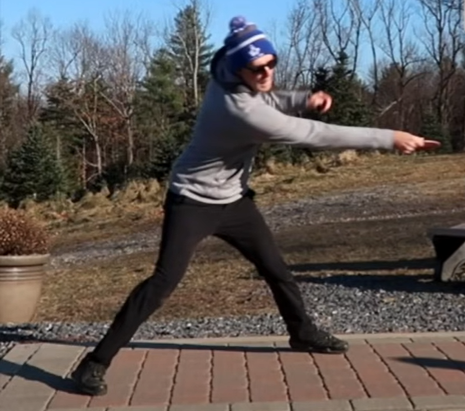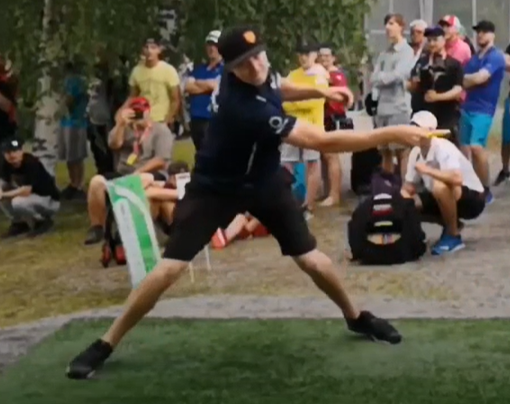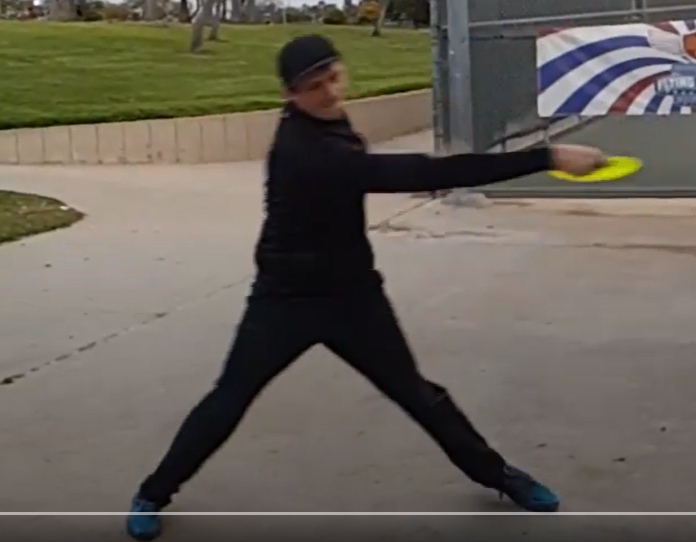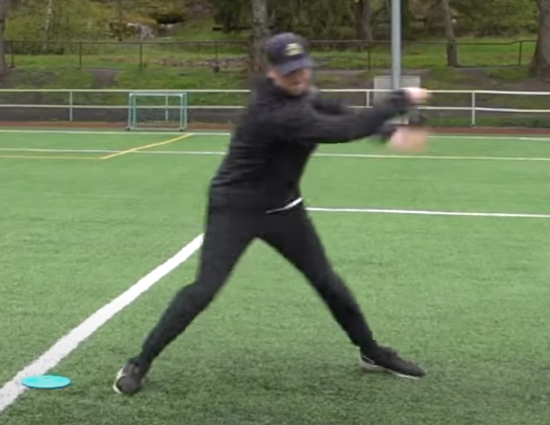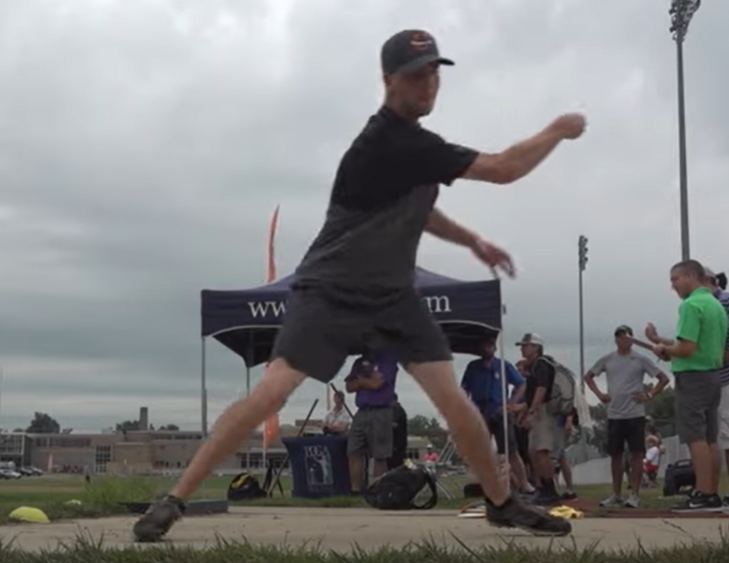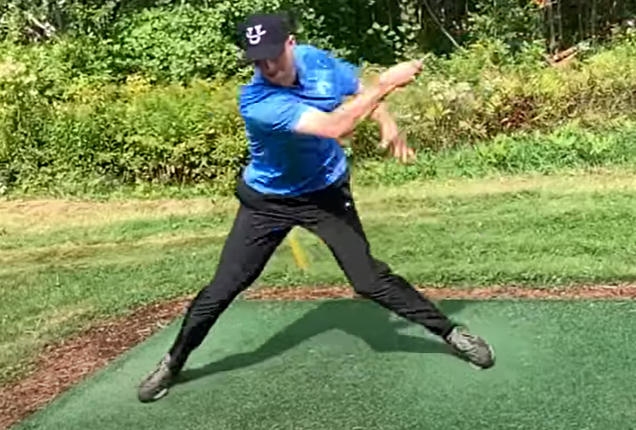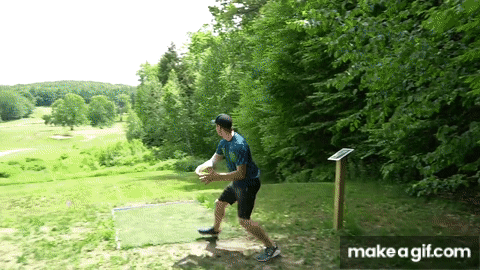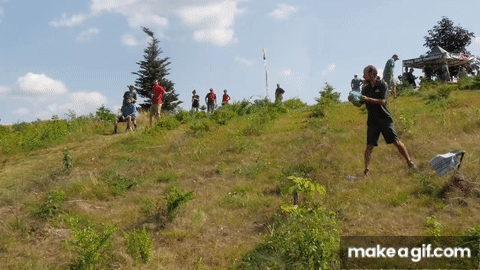Yeah I know that a still frame doesn't always do justice to a dynamic motion. Like I said in my last post: "Only momentum can move them or your whole body forward." So I'm saying, I can see how their linear movement down the tee pad continues all the way into throwing the disc. But what I'm not understanding is this idea of being able to slide or rock or move your hips forward in a way that could add a LOT of power to the swing once you have taken a medium to large plant step? As referenced by the photos. When I watch those throws, I don't see ANY out of the ordinary movement of the hips. It just seems like their doing what they can in the athletic movement of the throw. It's not like they are firing their hips like in a baseball or golf swing, that you can clearly see. They just turn at the same time as the core starts to turn, maybe ever so slightly ahead. But it's not something that you can see. So this idea is very confusing.
When I try to engage or rock or slide or move my hips forward to add power to the throw (when just practicing these movements without a disc in my family room using a medium to wide plant) I can not engage or use my hips in a way that seems to add ANY power or anything at all. Only when I use a very narrow stance (about shoulder width or narrower), can I feel this idea of using my hips to slide in first and create extra power. But then add an X step into the equation and it's instantly lost.
This gif I made here of Richard showing the move is confusing. His hips barely move forward much at all, and with no real power or force. And when watching any pro throw, I also don't see their hips rock or move or slide forward that much either. Or like it's any appreciable amount of hip turn out of the ordinary of an athletic movement. And even if they do move their hips slightly, it seems like it's not with much power.
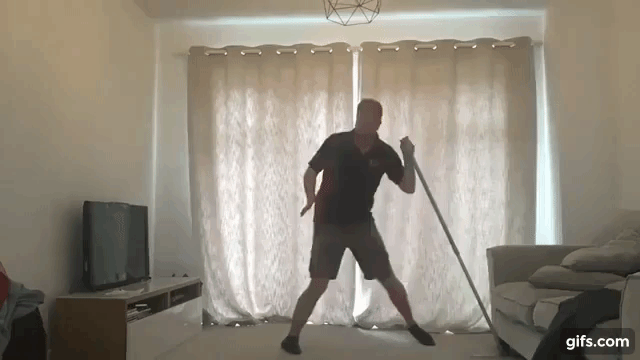
And I want to be clear, I'm not saying none of this happens. I'm saying, I don't see it, and I don't understand it. I'm very confused how this tiny little slow movement of the hips can seemingly make SUCH a big difference. I can TOTALLY see the hips at work in a golf swing and in a baseball swing. It's super obvious. Not at all with a disc golf throw. So not arguing or contradicting what anyone is trying to say or help with. Just saying, I don't understand a lot of this idea of WHAT exactly the hips are supposed to be doing. And feel like a lot of you are saying "THIS IS THE KEY" to throwing far and well. So it's something I'm really trying to understand and work on. So thanks for trying to explain

